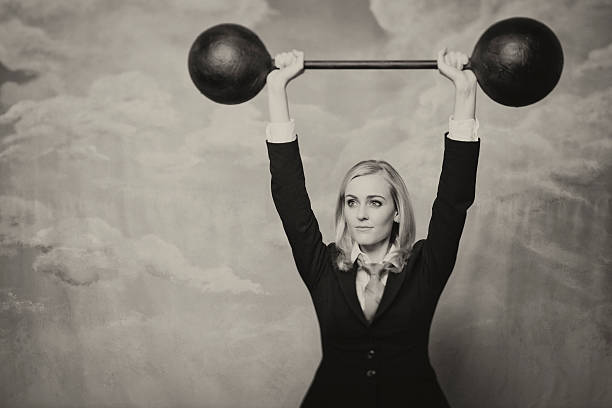Pretty bad. From 1987 to 2007, the U.S. prison population nearly tripled. The American prison population in 2004 was eight times larger than it was in 1954. In 2008, it was 40 times greater than it was in 1904. On a per capita basis, there were 15 times more sentenced prisoners in 2008 than in 1904. At the beginning of 2008, 2,319,258 Americans were in prison or jail, more than in any other country in the world, and a greater percentage of our population is in prison or jail than in any other country in the world. At the start of 2009, the total incarcerated population in the United States was 2,424,279. That is just the number behind bars, four times more people than are in the U.S. Army, more than Utah in the last census. With 5% of the world’s population, the United States has 25% of the world’s prisoners. In 2010, more Americans are serving life sentences than ever before. Prisoners now have their own inspirational lifestyle publication, “Prison Living Magazine.”
In 2007, the entire U.S. correctional population, which includes jail and penitentiary prisoners plus those on probation and parole totaled 7,328,200. By the end of 2008, the number of probationers and parolees rose again. Add in ex-convicts who have completed sentences, parole, or probation, and all who are slaves to their addictions, and the number of living Americans who are now or have ever been enslaved exceeds 10,000,000. Every year, some 13.5 million people spend time in jail or prison, and 95% are released. Reducing the number behind bars does not directly decrease the correctional population. Over two-thirds of the correctional population is outside prison, on probation, on parole or awaiting trial. When the prison population peaks and then declines, it will probably just mean more offenders are on the outside.
The hyper-incarceration statistics for African-American males are much worse. We incarcerate one in nine African-Americans between the ages of 20 and 34. By 2007, the U.S. Department of Justice estimated that African-American males have a 32% chance of going to prison or jail – becoming slaves – in their lifetimes. Young black male high school dropouts are almost 50 times more likely to wind up behind bars than the average American, and 60% of that demographic cohort eventually goes to prison.
Prison costs put major holes in state budgets but don’t improve recidivism. The total cost exceeded $49,000,000,000.00 in 2007, and fairly recent figures show a national per prisoner operating cost of $23,876.00 per year. One study pegged the total costs at over 60 billion dollars. Costs are still rising, taking ever-larger shares of state general funds and crowding out other priorities. Forward thinking criminologists, recognizing the lack of good answers in penology, actively seek new evidence-based techniques from other disciplines. The State of California pays $49,000 per prisoner per year according to its governor at mid-year 2009, who also said the national average is now $32,000 per prisoner per year. With more inmates serving life-without-parole and longer sentences, incarceration costs continually increase due to rising healthcare expenses for older convicts.
Not just the prisons are overcrowded and expensive. Officers supervising parole and probation often have more cases to handle than earlier thought optimal. At the start of 2008, over 5.1 million adult men and women were on probation or parole. Each of those probationers and parolees costs thousands of dollars per year to supervise. Direct expenditures on police and the judicial system increased by several hundred percent over the last 30 years, too, and now cost a total of about $150 billion dollars per year.
Americans of both parties thought we ended welfare as we knew it when work was required of welfare recipients – but we forgot the biggest group of unemployed welfare recipients. The millions of social parasites we fully support in prisons and jails went almost undetected during welfare reform. Very few prisoners pay for more than a tiny fraction of their upkeep; most pay zero. Unlike welfare recipients who may receive some money for food, clothing, and shelter, we provide prisoners with all of their balanced and regular meals, decent clothing, shelter, utilities, court-mandated medical and dental care, medication, education, limited franking privileges, recreation, toiletries, bedding, various forms of treatment or therapy, and for those in isolation their own private cells with room service. Many enjoy TV, radio or music devices. President Clinton announced in 1998 that inmates would be stopped from receiving Social Security checks, but thousands of prisoners received U.S. government stimulus package checks in 2009, many by mistake. According to the Inspector General for Tax Administration in 2010, 1,295 prisoners fraudulently received first-time homebuyer tax credits, averaging over $7,000 per prisoner. Of this group, 715 were serving life sentences. Mass incarceration increased the size of the American welfare state through direct costs and the collateral welfare costs caused by family members going to prison. The costs of crime and punishment are much greater than the expenses of incarceration. There are huge personal costs for the victims and the families of the perpetrators. Victims lose heavily in dollar terms. Crime victims lose billions of dollars every year. Every year, U.S. gun violence costs society an estimated $80 billion. Black victims greatly outnumber white victims on a percentage basis. Almost half of gunshot victims are black. Blacks victimize their own race. In 2005, about 93 percent of black victims were murdered by blacks.
Mass incarceration harms the country in multiple ways. It simultaneously creates more actual unemployment, because prisoners are vastly under-employed, labor shortages outside prison, regularly filled by foreign workers, and new welfare recipients inside prison, because each prisoner is in essence on full-ride welfare. It produces extra welfare recipients outside prison as well. Families of prisoners lack financial support. Prisoners have greater legal and correctional expenses generally and suffer from more suicide, self-mutilation, gang influence and racism. Mass incarceration broadens widespread unhappiness and societal disruption. The 2010 Census will arguably count a couple of million prisoners in the wrong place. Uncontrolled government spending misled us into thinking we could afford mass incarceration. As it turns out, we cannot. It’s a significant drag on our entire economy. Over two million people are in prison, and it takes millions of citizens outside prison, working hard, just to support them.
The good news from history is that nations eventually do what makes economic sense with their prisoners. Change is therefore coming, because our current systems are wasteful in many ways. The fairly recent Supreme Court decision in Brown v. Plata may help grab the necessary attention.




